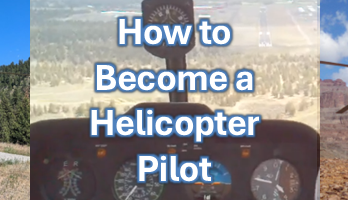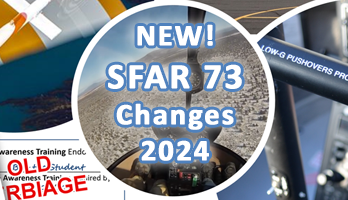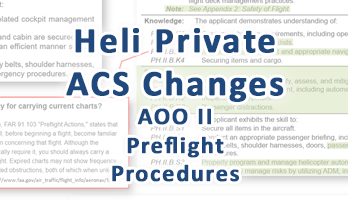This is the seventh training flight in a series following a student through his flight training from day 1 to checkride in an R22.
We continue to build on aircraft control and radio work, but this time add navigation to a new airport – with pattern entry, getting local weather, using the GPS, etc. We also start to push into dealing with some emergency procedures (EPs) such as alternator failure & turbulence. We also introduce running landings and continue to practice hover autos, air taxi, quickstop, hover work and more.
Below the video are time-stamped notes/tips for the flight.
NOTES/TIPS:
0:00 Collective friction on or off? Push knob forward to go (friction off)
0:30 Low RPM warning system check
1:05 Situational Awareness (SA) before picking up (runways, weather/wind, traffic, etc)
3:25 Review radio calls (in your head or out loud) before pulling the trigger
4:50 2 stage pickup
5:50 Starting to take on Pilot in Command (PIC) responsibilities (clearing etc)
6:50 Clear taxi way intersections
7:20 Make radio call before taking runway, slow down & don’t rush
7:50 Full clearing for base traffic
8:35 Landing traffic has priority
9:35 Last visual check before taking runway
10:35 Try not to bounce cyclic
11:20 Climb to 500′ & 60 kts to have some energy & time for engine failure
11:50 Right crosswind radio calls
12:30 Know local airplane traffic altitudes
13:50 Turbulence emergency procedure (EP)
14:35 Use of GPS Nearest feature and making a position report
17:25 Know what temp and pressure is when at cruise to see if anything changing
17:50 Alternator Warning Light EP
19:50 Watch out for traffic when crossing powerline
22:30 Importance of using the airport name on Common Traffic Advisory Frequency (CTAF)
23:30 Use the size of a runway (roughly 1 mile) to help estimate distance (how many runways could you fit between you and the airport)
24:50 Wind assessment inbound to an airport with no automated weather reporting
25:50 Avoid the flow of fixed wing traffic
30:20 No bouncing cyclic
32:20 Assess wind socks in downwind and change runway if need be
36:50 Climb speed
37:20 Cross wind leg
38:00 Learning plateaus
39:20 Low Approach
41:50 Variable local winds
46:20 Hover work – pirouettes
47:10 Difference between left and right pedal turns
48:50 Air taxi – avoid quickstop with tailwind (Vortex Ring State)
50:10 Airtaxi with tailwind – very careful stop
52:50 Radio calls for unnamed taxiways
53:30 Know how much fuel to get back with reserves
56:30 Left cross wind affecting tail rotor performance
56:50 Just speak plain English to ask other aircraft intentions
1:00:10 Use crosswind calls when helpful to other traffic
1:01:05 Crossing wires at towers
1:03:50 Check fuel status before diverting
1:05:15 Manifold pressure limits go down as you climb
1:05:40 Air moves like water over terrain – downdrafts on lee side
1:07:30 Blade slap – how to avoid it
1:10:25 Crab angle or wind correction angle
1:11:20 Radio call structure
1:12:00 Using wind to estimate runway in use
1:12:40 How to enter the traffic pattern using a 45 degree angle to downwind
1:14:05 ‘Closed’ traffic
1:20:40 FAA fuel requirements
1:25:30 Running landing demonstrated
1:33:10 Hover autos
1:35:50 No he didn’t
1:36:24 Small cyclic movements
1:36:50 Hover autos with control isolation
1:40:25 Don’t focus on the spot on set downs
1:40:50 3 shut down items memorized
1:42:35 Higher inertia rotor systems = safer higher hover
1:43:20 Fuel reserves – planned vs actual
To view all the videos in this series, check out this YouTube playlist of all the Flight Training Sessions (Full-Length Unedited)





